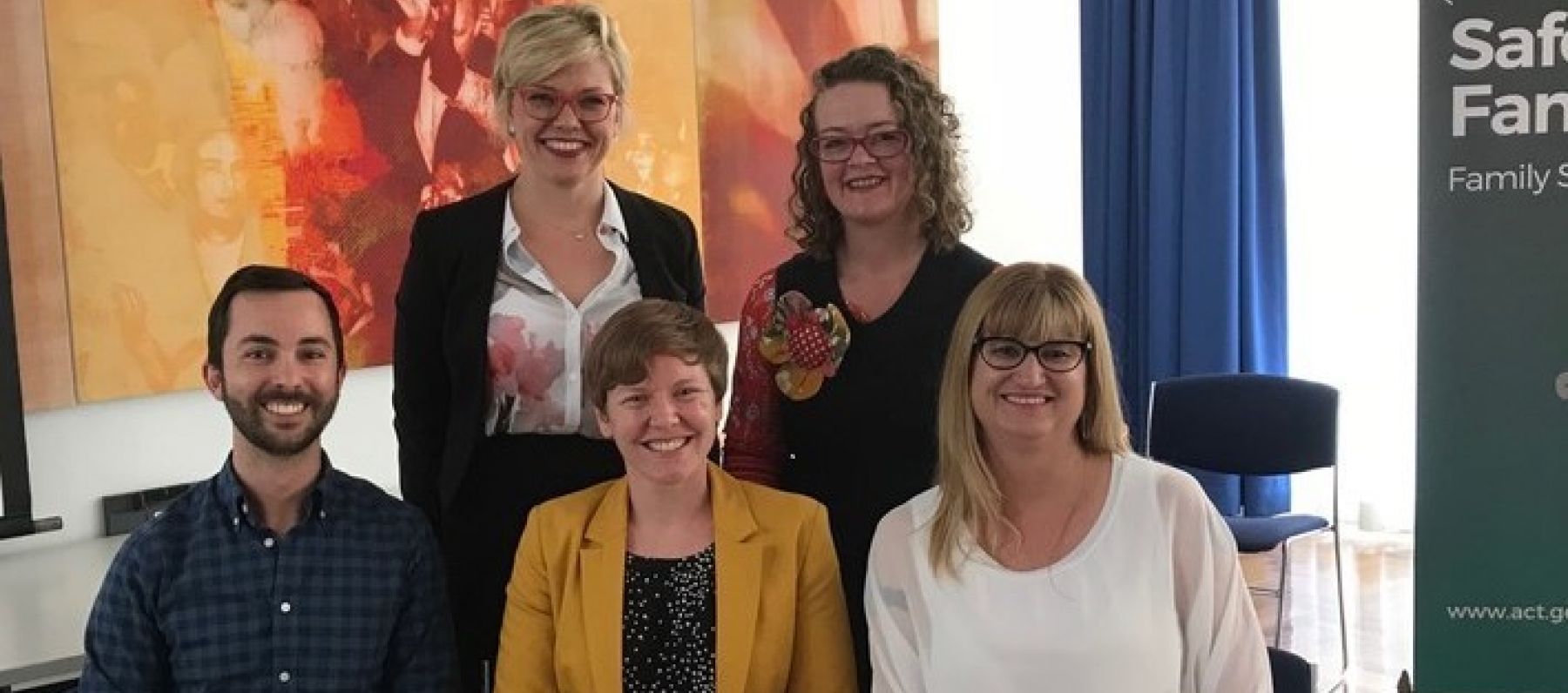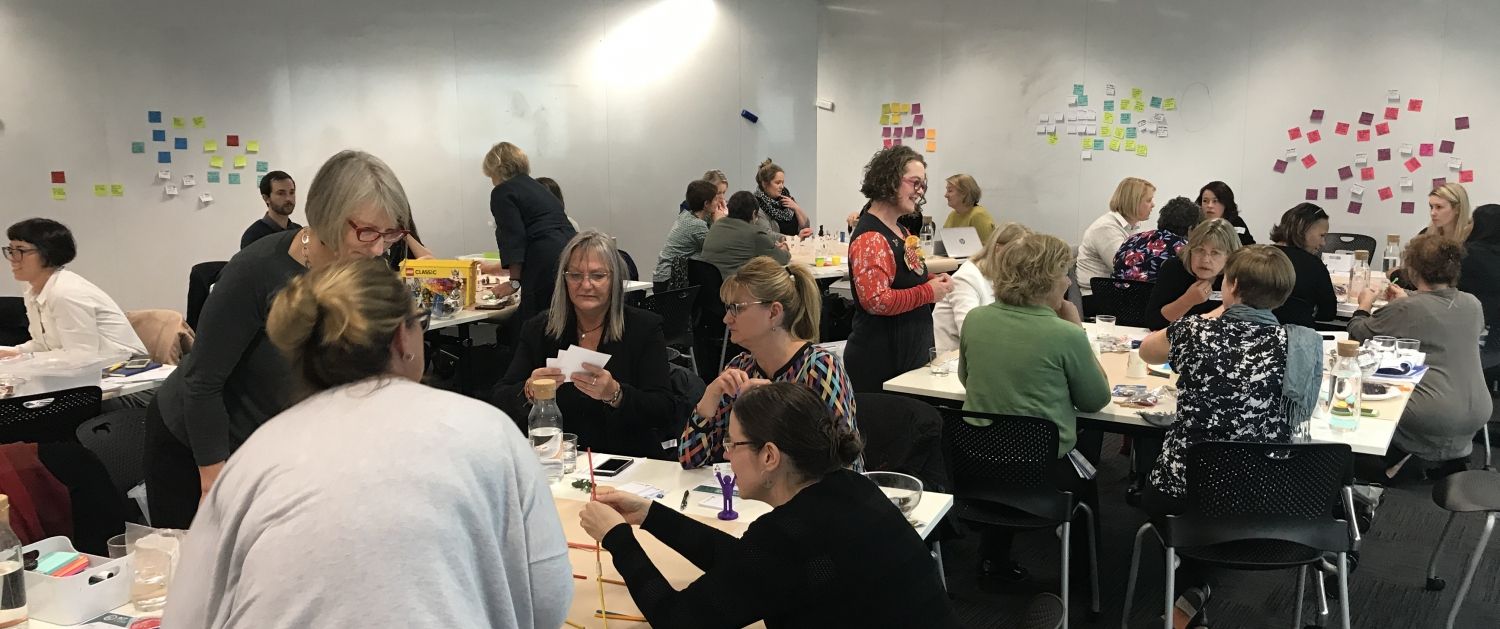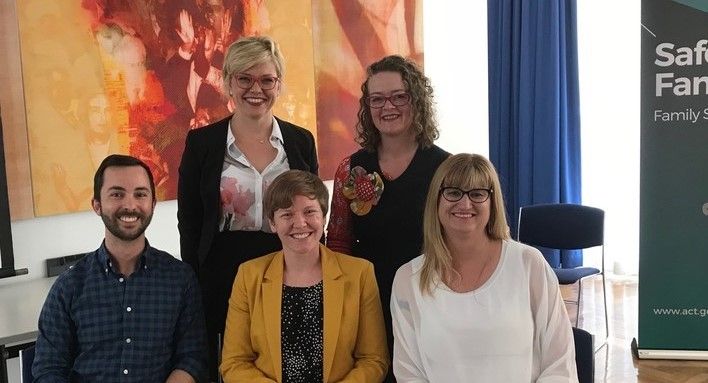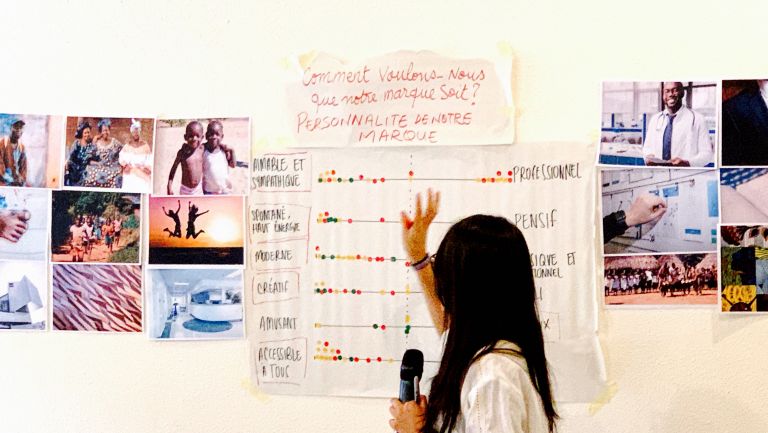Sign up for our monthly newsletter

Codesign means telling a story (but it might not be the one you think....)
The ACT Government’s recently-announced Family Safety Hub has been widely and rightly celebrated.
"We absolutely think this work could save lives," ACT Coordinator-General for Family Safety Jo Wood said at the project’s launch.
"It's a different approach,” said ACT Deputy Chief Minister Yvette Berry. “An innovative approach, doing things in a way that we've never even thought about before
“This is a terrific project,” said the judges of Australia’s oldest design prize as they bestowed a Good Design Award ‘tick’ upon it.
Like all successful designs it now appears as though this hub was the obvious, predestined solution to the complex challenge of bringing together a disparate and sometimes confusing web of family violence services and resources.
That couldn’t be more wrong.
Because as so often happens with genuine co-design processes, we didn’t set out to design anything like the outcome we ended up with.
That much was made clear during a recent in-conversation event, where key design voices from the project got together to talk through this hugely-important innovation and the co-design process that gave birth to it
The ACT Government invited Jo Wood, myself, Project Lead Steven Portelli, Mirjana Wilson from the Domestic Violence Crisis Service and ACT Victims of Crime Commissioner Heidi Yates to a discussion hosted at the Legislative Assembly about the experience of using co-design on this project.
Here are our three big takeaways:

- Co-Design means non-deterministic problem solving
As Jo Wood talked about the journey over the last 18 months, she shared a coherent and powerful narrative. In some ways this coherence was a (lovely) illusion.
My opening remarks to the audience were that this result makes perfect, elegant sense in retrospect, but was not so clear as we went about this project.
Why?
Co-Design is a methodology that depends on fundamentally letting go of deterministic plans to solve a problem. It assumes we take no possible approach or solution as a given. Often, as we go along, we will change our view on even what we think the problem is.
When you co-design you start by exploring what the problem truly is. To move forward requires optimism but also the courage to be open to learning and figuring things out iteratively.
READ MORE: IS CODESIGN MORE THAN JUST A BUZZWORD?
- Respect people’s expertise (but co-design itself is an expertise)
In my opening comments I talked about some core concepts of co-design. One of these is that when we engage different voices in a co-design process, we need to understand that people are highly capable and expert in what they do every day.
This is mostly a good thing but it also means that they will sometimes be biased by their everyday expertise, skills and mindset. Our job is sometimes to learn from their expertise, at other times to explore and challenge the restrictions it imposes.
Co-Design is a practise that often makes people uncomfortable. As designers our role is to coach and build skills in divergent thinking, curiosity, creativity and pattern-finding and to shape those growing capabilities towards insight generation.
Mirjana Wilson described her shifts in how she saw the problem and potential solutions as she was exposed to the co-design process. She recalled that it was hard for her to explain what was happening (and why) to colleagues who had not been part of the process.
As with all learning experiences, you must participate to truly learn – you cannot just ‘tell’ your lessons. American education thinker John Dewey put I best: learning is “felt difficulty”.
READ MORE: HOW THE HUB WILL SAVE LIVES
3. Co-Design: Victory is a journey
The success of the Family Safety Hub can be counted already, but the bigger victory is yet to come.
The co-design journey, as Jo Wood pointed out, has achieved significant wins. As a design team we pivoted from the original Government hypothesis, which was “another front door” to a “system of catalysing innovation”.
What does that mean? It means a system that co-creates interventions to address family and domestic violence in our communities.
A system that builds capacity in our community to work together with new partnerships being formed and new projects emerging independent of the Family Safety Hub.
It means progressing and prototyping high-impact ideas aimed at addressing violence in our community. The value of this work will be more visible in 12 months when we can start to see changes in our community’s experience that have come through addressing family violence collectively.
It was a wonderful opportunity to be on the panel, and an honour to be involved in this important project. ThinkPLace’s involvement was a true team effort, including Cate.Shaw [at] thinkplace.com.au (@Cate Shaw) anna.oreilly [at] thinkplace.com.au (@Anna O'Reilly) Abram.ElSabagh [at] thinkplace.com.au (@Abram El-Sabagh) kate.thornber [at] thinkplace.com.au (@Kate Thornber).
Want to know more about ThinkPLace? Join our new CIPI community...








